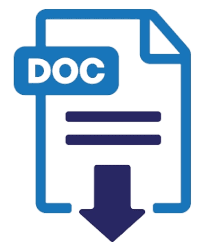IN FIRE WE STRONG: THE ROLE OF RESILIENCE IN EXAMINING HELP ATTITUDE TO ADOLESCENCE POST TRAUMATIC GROWTH
State University of Jakarta
Indonesia
Universitas Islam Negeri Syarif Hidayatullah Jakarta
Indonesia
State University of Jakarta
Indonesia
Abstract
The fire in Tambora, West Jakarta, is a man-made disaster. It occasionally happened because of its type of disaster. The uniqueness of this study is to see how the attitude of Adolescence to help each other during a disaster can affect post-traumatic growth (PTG), which is moderated by resilience. The research method used is a quantitative method with moderated regression analysis technique. The results show that PTG will grow even more when teenagers have a helpful attitude and are supported by good resilience.
Keywords
References
Bisson, J. I. (2007). Post-traumatic stress disorder. BMJ, 334(7597), 789-793. https://doi.org/ 10.1136/bmj.39162.538553.80
Bokszczanin, A. (2012). Social support provided by adolescents following a disaster and perceived social support, sense of community at school, and proactive coping. Anxiety, Stress & Coping, 25(5), 575-592. https://doi.org/10.1080/10615806.2011.622374
Brooks, S., Amlôt, R., Rubin, G. J., & Greenberg, N. (2020). Psychological resilience and post-traumatic growth in disaster-exposed organizations: Overview of the literature. BMJ Military Health, 166(1), 52-56. https://doi.org/10.1136/jramc-2017-000876
Cryder, C. H., Kilmer, R. P., Tedeschi, R. G., & Calhoun, L. G. (2006). An exploratory study of posttraumatic growth in children following a natural disaster. American Journal of Orthopsychiatry, 76(1), 65-69. https://doi.org/10.1037/0002-9432.76.1.65
de Vet, E., & Eriksen, C. (2020). When insurance and goodwill are not enough: Bushfire Attack Level (BAL) ratings, risk calculations and disaster resilience in Australia. Australian Geographer, 51(1), 35-51. https://doi.org/10.1080/00049182.2019.1691436
El-Gabwaly, R., Mackenzie, C., Starzyk, K. B., & Sommer, J.L. (2020). Understanding the relationship between traumatic suffering, posttraumatic growth, and prosocial variables. Journal of American College Health. DOI: 10.1080/07448481.2019.1705841
Finstead, G. L., Giorgi, G., Lulli, L. G., Pandolfifi, C., Foti, G., León-Perez, J. M., Cantero-Sánchez, F. J., & Mucci, N. (2021). Resilience, coping strategies and posttraumatic growth in the workplace following covid-19: A narrative review on the positive aspects of trauma. International Journal of Environmental Research Public Health, 18, 9453. https://doi.org/10.3390/ijerph18189453
Greeff, A. P., & Lawrence, J. (2012). Indications of resilience factors in families who have lost a home in a shack fire: Indications of resilience factors. Journal of Community & Applied Social Psychology, 22(3), 210-224. https://doi.org/10.1002/casp.1108
Harmon, J., & Venta, A. (2021). Adolescent posttraumatic growth: A review. Child Psychiatry & Human Development, 52(4), 596-608. https://doi.org/10.1007/s10578-020-01047-9
Javidi, H., & Yadollahie, M. (2012). Post-traumatic stress disorder. Int J Occup Environ Med, 3(1), 2-9
Kumar, V., Jana, A., & Ramamritham, K. (2020). Simulating fire-safe cities using a machine learning-based algorithm for the complex urban forms of developing nations: A case of Mumbai India. Geocarto International, 1–16. https://doi.org/10.1080/10106049. 2020.1756463
Lee, D., Yu, E. S., & Kim, N. H. (2020). Resilience as a mediator in the relationship between posttraumatic stress and posttraumatic growth among adult accident or crime victims: The moderated mediating effect of childhood trauma. European Journal of Psychotraumatology, 11(1), 1704563. https://doi.org/10.1080/20008198.2019.1704563
Levine, S. Z., Laufer, A., Stein, E., Hamama-Raz, Y., & Solomon, Z. (2009). Examining the relationship between resilience and posttraumatic growth: Resilience and growth. Journal of Traumatic Stress, 22(4), 282-286. https://doi.org/10.1002/jts.20409
Meng, Z., Wu, X., & Han, L. (2018). Post-traumatic stress disorder and post-traumatic growth among the adult survivors of the Lushan earthquake: Selecting resilience as the moderator. International Journal of Disaster Risk Reduction, 27, 524–529. https://doi.org/10. 1016/j.ijdrr.2017.11.016
Meyerson, D. A., Grant, K. E., Carter, J. S., & Kilmer, R. P. (2011). Posttraumatic growth among children and adolescents: A systematic review. Clinical Psychology Review, 31(6), 949–964. https://doi.org/10.1016/j.cpr.2011.06.003
Muhammad, K., Ahmad, J., & Baik, S. W. (2018). Early fire detection using convolutional neural networks during surveillance for effective disaster management. Neurocomputing, 288, 30–42. https://doi.org/10.1016/j.neucom.2017.04.083
Nickell, G. (1998). The Helping Attitudes Scale. Paper presented at 106th Annual Convention of the American Psychological Association at San Francisco, August, 1998.
Palgi, Y., Dicker-Oren, S. D., & Greene, T. (2020). Evaluating a community fire as human-made vs. natural disaster moderates the relationship between peritraumatic distress and both PTSD symptoms and posttraumatic growth. Anxiety, Stress, & Coping, 33(5), 569-580. https://doi.org/10.1080/10615806.2020.1755818
Penman, T. D., Eriksen, C., Horsey, B., Green, A., Lemcke, D., Cooper, P., & Bradstock, R. A. (2017). Retrofitting for wildfire resilience: What is the cost? International Journal of Disaster Risk Reduction, 21, 1-10. https://doi.org/10.1016/j.ijdrr.2016.10.020
Purnamasari, I. (2016). Perbedaan reaksi anak dan remaja pasca bencana. Jurnal Penelitian dan Pengabdian Kepada Masyarakat UNSIQ, 3(1) 49-55. https://doi.org/10.32699/ ppkm.v3i1.336.
Smith, B. W., Dalen, J., Wiggins, K., Tooley, E., Christopher, P., & Bernard, J. (2008). The brief resilience scale: Assessing the ability to bounce back. International Journal of Behavioral Medicine, 15(3), 194-200. https://doi.org/10.1080/10705500802222972
Stidham, A. W., Draucker, C. B., Martsolf, D. S., & Mullen, L. P. (2012). Altruism in survivors of sexual violence: The typology of helping others. Journal of the American Psychiatric Nurses Association, 18(3), 10.
Sutanti, N., Tjahjono, B., & Syaufina, L. (2020). Analisis risiko bencana kebakaran di Kecamatan Tambora Kota Administrasi Jakarta Barat. Tataloka, 22(2), 162-174. https://doi.org/10. 14710/tataloka.22.2.162-174
Tedeschi, R. G., & Calhoun, L. G. (1996). The Posttraumatic Growth Inventory: Measuring the positive legacy of trauma. Journal of Traumatic Stress, 9(3), 455-471. https://doi.org/ 10.1007/BF02103658
Trzmielewska, W., Zięba, M., Boczkowska, M., Rak, T., & Wrześniowski, S. (2019). Motivation of cancer patients to help others and the relation between posttraumatic growth and helping. Current Issues in Personality Psychology, 7(3), 232-241. https://doi.org/10.5114/cipp. 2019.86231
Van Loey, N. E., van de Schoot, R., & Faber, A. W. (2012). Posttraumatic stress symptoms after exposure to two fire disasters: Comparative study. PLoS ONE, 7(7), e41532. https://doi. org/10.1371/journal.pone.0041532
Vieselmeyer, J., Holguin, J., & Mezulis, A. (2016). The role of resilience and gratitude in posttraumatic stress and growth following a campus shooting. Psychological Trauma: Theory, Research, Practice, and Policy. http://dx.doi.org/10.1037/ tra0000149
Vollhardt, J. R., & Staub, E. (2011). Inclusive altruism born of suffering: The relationship between adversity and prosocial attitudes and behavior toward disadvantaged outgroups. American Journal of Orthopsychiatry, 81(3), 307-315. https://doi.org/10.1111/j.1939-0025.2011.01099.x
Wan-Ting Liao & Tzeng, A. (2020).The mechanism underlying empathy-related helping behavior: An investigation of empathy-attitudeaction model. International Journal of Psychological and Behavioral Sciences, 14(9), 879-885.
Yehuda, R., Hoge, C. W., McFarlane, A. C., Vermetten, E., Lanius, R. A., Nievergelt, C. M., Hobfoll, S. E., Koenen, K. C., Neylan, T. C., & Hyman, S. E. (2015). Post-traumatic stress disorder. Nature Reviews Disease Primers, 1(1), 15057. https://doi.org/10.1038/ nrdp.2015.57
Ying, L., Wang, Y., Lin, C., & Chen, C. (2016). Trait resilience moderated the relationships between PTG and adolescent academic burnout in a post-disaster context. Personality and Individual Differences, 90, 108-112. https://doi.org/10.1016/j.paid.2015.10.048
Yuan, G., Xu, W., Liu, Z., & An, Y. (2018). Resilience, posttraumatic stress symptoms, and posttraumatic growth in Chinese adolescents after a tornado: The role of mediation through perceived social support. Journal of Nervous & Mental Disease, 206(2), 130-135. https://doi.org/10.1097/NMD.0000000000000778
Bachelor of Psychology

